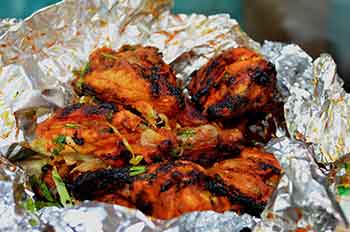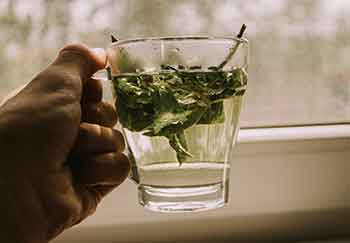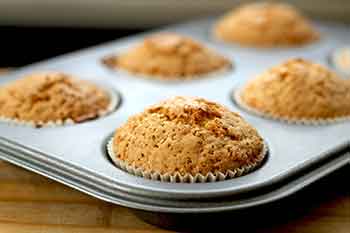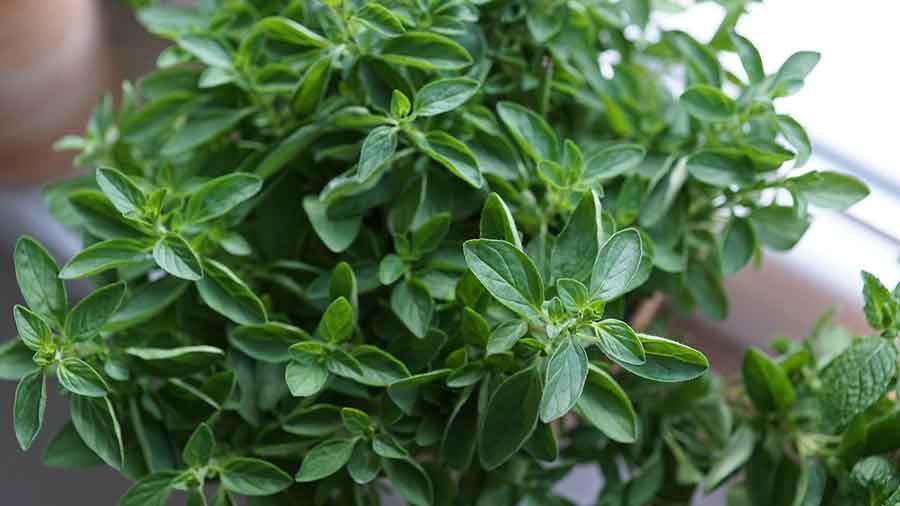Oregano is a pretty popular herb in the kitchen. It is probably because of its sweet, aromatic flavor. And also, with its Mediterranean heritage, it's the ideal herb to use in Italian and Spanish-style dishes, such as pizza and pasta. Oregano is a grab-and-go herb that pairs well with chicken, scrambled eggs, baked eggplant, burgers, and even fish.
With all these wonderful culinary benefits, I think it makes sense to have your own oregano planted in the garden or a container. Planting it from seeds may take a long time before harvesting. So the question is “Can you grow oregano from cuttings?” The answer is yes. It is rather easy to grow oregano from cuttings. Just one important tip though, like basil, cut oregano before the parent plant has had the chance to flower. With cuttings, you can even grow oregano you bought from the supermarket.
How to Grow Oregano from Cuttings
- Cut the oregano plant and put it in a wide-rim glass jar. It is best to cut off healthy young shoots with scissors or break off with your hand
- Choose rain or tap water that has been left overnight. Rainwater is perfect for most house plants, especially if the tap water is hard. Leaving tap water overnight tends to lower its chemical content, especially chlorine.
- Prepare the cuttings by nipping off the lower leaves. You just need a few at the top of the cutting. Trim just below the bottom leaf joint. Leaves submerged in water will just rot.
- Put a handful of cuttings into the glass jar so that the stems are covered with water. To encourage the roots to grow from the cuttings, place it on a warm, light window ledge or where there is a bright light. You can easily grow the cuttings indoor just by placing them on a windowsill.
- Don’t forget to change the water at least once a week.
- After a while, you will see tiny roots starting to appear from the leaf joints along the submerged stems. Allow these to grow a little more.
- When roots start to come out, don’t change the water.
- When a good root system has developed, pot the cuttings up. You have now successfully rooted your cuttings in water!
I also made a blog about herbs that can be grown from cuttings. You can check it out here.
Growing Oregano in Pots
It is enough to let the oregano grow in water but to really make it grow faster or to have a good number of oregano leaves to harvest, you can plant it in your garden or in containers.
When the conditions are right, oregano makes low bushy hummocks, topped with purple flowers that are attractive to bees and butterflies. It is good in patio pots or it can be grown as edging in herb and cottage borders.
To grow oregano in pots, make sure it is planted in any well-drained soil in full sun. The more sun it receives, the more pungent the leaves. It doesn't like wet soil. Add grit or coco peat to compost to improve drainage in patio pots. You can shear off old stems to reveal the basal growth of leaves.
Growing Oregano Through Seeds
If you can’t find any oregano in the supermarket, then perhaps you can consider growing it from seeds.
To do this, fill starter trays with seed raising mix soil, compost, or garden soil. Sprinkle seeds over mix, lightly cover, and gently water. Keep the soil moist throughout germination. Once seedlings are 10 cm tall, fill chosen pots with quality potting mix, or compost. If it is not available, then you may use ordinary garden soil. Transplant seedling into the pot and water in well with nitrogen-rich water-soluble fertilizer for faster growth.
Oregano is an Excellent Source of Vitamin K, Iron, and Manganese
Oregano has heart-shaped, olive green leaves with serrated margins. The pleasant smell of its leaves is due to the presence of chemicals thymol, carvacrol, and limonene. Thymol and carvacrol have antiviral, antibacterial, and antifungal properties.
The leaves, growing in multi-branched stems, contain a significant amount of Vitamin K, iron, and manganese. This is also one reason why it is good to plant oregano in the house.
Vitamin K
Vitamin K is commonly known as the clotting vitamin bit it does more. Recent studies have shown that it helps maintain strong bones by facilitating calcium absorption. Bones end up denser and osteoporosis is prevented or delayed among the elderly.
It is also important in keeping the arterial walls flexible to allow blood to pass freely. Vitamin K does this by carrying away calcium that would have attached to the arterial wall lining. With insufficient vitamin K, the walls of arteries may be damaged and calcified.
As an added benefit, vitamin K helps wounds heal faster. The nutrient also helps regulate blood sugar levels.
Iron
This is an important mineral because about 70 percent of it is found in the red blood cells as hemoglobin and a certain percentage in the form of myoglobin found in the muscles. Hemoglobin is very essential in the transport of oxygen from the lungs to all the cells of the body.
Myoglobin, on the other hand, is involved in the transport and release of oxygen in the muscle cells of the heart and skeletal muscles. Iron is also important in the transmission of nerve impulses for proper coordination of the parts of the body.
Because of its role in the growth, production, and maturation of lymphocytes, iron can help the body fight infections.
Manganese
Manganese is a vital component of several enzymes that are involved in energy production and many other functions. It is also used to activate enzymes that are integral to the metabolism of glucose and fatty acids.
Manganese is needed in making the bones strong and keeping the skin and the immune system healthy.
Ways to Prepare Oregano

Here are some ways you can prepare oregano once you harvest them:
- Mixed with roasted, fried, or grilled vegetables, meat and fish
- Used in most Italian foods as flavoring
- Used as condiment
- Added to salads
- Added to lemon-olive oil sauce
- Used as part of steam inhalation
- Prepared as tea (4 cups of water: 1 cup oregano leaves)
Oregano is Best for Digestion, Immunity, Lungs
Eating oregano has its health perks. Here are some ways eating oregano can help you stay healthy:
Digestion
- Inhibits the growth of several bacteria, including Coli
- Increases bile flow
- Relieves intestinal gas formation
- Promotes digestion by increasing the secretion of digestive juices
- Relieves gastroesophageal reflux disease (GERD) and heartburn
Immunity
- Reduces bacterial resistance to common drugs such as penicillin
- Has antiseptic and fungicide properties
- Lowers the body temperature
- Effective against ringworm infections
The lungs
- Acts as an expectorant
- Loosens up or helps eliminate the buildup of mucus and phlegm in the respiratory tracts and sinuses.
Tips and Precautions Before Eating Oregano
- Oregano is not recommended for pregnant women due to its stimulation of some hormones that may cause miscarriage
- People with allergy to basil, mint, or sage should avoid oregano
- Oregano oil may cause skin and mucous membrane irritation
Making an Oregano Tea
When you pour boiling or very hot water on fresh or dried parts of a plant and let it soak or steep for a minute or two, you’re generally preparing an herbal tea. When you do this, you get to enjoy the flavor and aroma of the herb and spice in the water you’ll be drinking.
But to get the most benefit out of the plant, you may need to let it steep longer. When you do this, you’re now making an infusion. Infusion is actually caffeine-free.

To make a caffeine-free oregano tea or infusion:
Place a sprig of fresh oregano in 2 cups of boiling water. Let it steep for 10 minutes. Add a teaspoon of honey, if desired. That’s it!
Oregano Preparation for Health Care
For relief of some common sickness, here are some ways to prepare oregano:
Common cold
Boil 2-3 cups of water. Turn off the heat before adding 1 cup of chopped fresh leaves. Allow to steep for at least 5-10 minutes. Drink this tea warm 2-3 times a day.
Asthma
Drink oregano tea sweetened with honey 4-5 times a day. Or, extract juice from the leaves. Take 1 tablespoon of the extract every hour.
Rheumatism, dyspepsia
Extract juice from the leaves. Take 1 tablespoon of the extract every hour.
Oregano Recipes
With plenty of oregano leaves at home, I searched for recipes where I can get creative in the kitchen. These are just some of the recipes I found.
Tomato-Oregano Combo
Smoothies are drinkable meals or snacks that are fast and easy to prepare. Besides adding flavor and color to this drink, mixing in oregano packs this drink with nutritional and health benefits.
Makes 1 glass
1 tomato
1 tablespoon chopped oregano
1 carrot
1 clove garlic
¼ cucumber
½ cup crushed ice
Blend everything together until smooth
Herby Muffins

3 cups flour
½ cup butter, melted
1 teaspoon basil
1 teaspoon dried oregano
1 tablespoon parsley, chopped
1 cup cheddar cheese, grated
2 eggs lightly beaten
1 ½ cup milk
Mix flour and butter. Add herbs and cheese and stir. Whisk eggs and milk together, add to flour mixture, and mix. Drop heaped tablespoons of coarse and lumpy mixture into well-greased muffin trays. Bake at 400 degrees F for about 20 minutes
Garlic and Herb Dressing
Pasta is superb with a simple dressing of garlic, herbs, and good olive oil. The secret is to warm the garlic with bay leaves in the oil, to mellow the garlic flavor slightly. Then the dressing should be left to stand for 30 minutes., or longer if possible, so that the flavor of the garlic can infuse the oil.
Serves 4
2 fresh bay leaves
4 garlic cloves, thinly sliced
5 tbsp extra virgin olive oil
Grated zest of 1 lemon
4 tbsp snipped fresh chives
4 tbsp chopped fresh oregano
4 tbsp chopped fresh parsley
Preparation time: 10 minutes, plus at least 30 minutes infusing
- Crease the bay leaves in half and place them in a small saucepan with the garlic. Add about 1 tbsp olive oil and heat gently for 2 minutes or until the oil just begins to sizzle around the garlic. Remove from heat.
- Stir in the lemon zest, then pour in the remaining oil. Set aside to infuse for at least 30 minutes
- Remove the bay leaves and add the chopped herbs. Toss the dressing into hot pasta and serve.
Lemon and Herb Roasted Chicken
Succulent chicken is a top source of healthy protein, vital for skin-renewal, and its anti-inflammatory properties make it especially beneficial for conditions such as rosacea. Mixed with herbs, this makes it an aromatic, healthy meal.
Serves 2
zest of 1 ½ lemons
2 tbsp olive oil
1 tbsp roughly chopped oregano, plus 2 sprigs
1 tsp roughly chopped thyme, plus 2 sprigs
1 tsp roughly chopped rosemary, plus 2 sprigs
2 garlic cloves, crushed
Freshly ground black pepper
2 chicken breasts, skin on
8 new potatoes, cut in half
2 carrots, peeled, cut into batons
2 small red peppers, deseeded and sliced
2 small red onions, cut in wedges
300 ml vegetable stock, or water
Preparation time: 10 mins
Cook time: 45 mins
- Preheat the oven to 200 deg Celsius (400 deg F). Place the lemon zest, oil, oregano, thyme, rosemary, and garlic in a bowl, season with pepper, to taste, and stir together well
- Spread the lemon-herb mixture on to the chicken breasts. Place the chicken breasts in a roasting tin and arrange the potatoes, carrots, peppers, onions, and sprigs of herbs around them. Add the stock, or water, and roast the chicken for about 45 minutes, until the juice from the chicken runs clear when pricked and the vegetables have browned at the edges
- Remove the chicken from the oven. Take off the skin, discard the herb sprigs, and serve with the vegetables.
References
Hendy, Jenny. 2011. Kid’s First Gardening Book. Lorenz Books, Anness Publishing Ltd
Reader’s Digest. Eat Yourself Healthy. Reader’s Digest Association Limited
Villaflor-Almocera, Evelyn. 2017. Healthy Foods Healthy Lives. Philippines: Philippine Publishing House
Gealone-Corpus, Arlene May. 2018. Healthy Herbs and Spices. Philippines: Philippine Publishing House










